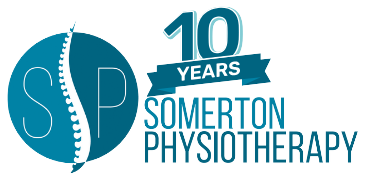What is Golfer’s elbow?
Golfer’s elbow is pain that is located on the inside of your elbow. The medical name for Golfer’s elbow is medial epicondylitis. The medial epicondyle is the bony prominence you can feel on the inside of your elbow (your funny bone). It is similar to tennis elbow but the difference between the two is the location of the pain. If you have tennis elbow you will feel pain on the outside of you elbow.
Signs and Symptoms of Golfer’s elbow.
Golfer’s elbow is characterised by:
• Numbness or tingling. These sensations may radiate into one or more fingers.
• Weakness. You may have weakness in your hands, wrist or elbow when lifting or working.
• Stiffness. Your elbow may feel stiff and it may hurt to make a fist.
• Pain and tenderness on the inner side of your elbow.
Sometimes the pain might worsen when you:
• Swing a golf club or racket
• Shake hands
• Turn a doorknob
• Lift weights or something heavy
• Pick up something with your palm facing downwards
• Flex your wrist
What causes Golfer’s elbow?
Treatment of Golfer’s elbow As with any golf injury the sooner you commence treatment, the sooner you will be able to return to playing again. The mainstays of physiotherpay treatment will include: Rest. Put your golf game or other repetitive activities on hold until the pain is gone. If you return to playing golf too soon, you may make the injury worse. Ice the affected area. Apply ice packs to your elbow for 10-15 minutes at a time, three times daily. To protect your skin, wrap the ice packs in a thin towel. Take an over-the-counter pain reliever. Your physiotherapist can advise you if this is necessary. Massage and manipulation. Your physiotherapist will treat you with either of these techniques to help reduce pain and inflammation in your elbow. An elbow brace or support. Your physiotherapist may recommend that you wear a support brace on your affected elbow to help reduce pain. Stretching and strengthen programme. Your physiotherapist will devise a tailored stretching and strengthening programme for you to help you overcome your injury successfully. Golfer’s elbow is typically related to excessive or repeated stress over a period of time. Forceful wrist and finger motions, improper lifting, throwing or hitting, as well as poor warm-up techniques can also contribute to Golfer’s elbow. Gripping or swinging clubs incorrectly or too forcefully is the most common cause of Golfer’s elbow. Any activity that requires repeatedly bending and straightening your elbow can contribute to Golfer’s elbow. Painters, plumbers, and carpenters or anyone performing repetitive gripping and lifting activities are also prone to Golfer’s elbow.
To get in touch email us on [email protected] or phone us on (01) 9069566 . Follow us on Instagram for physiotherapy and clinic Updates.
